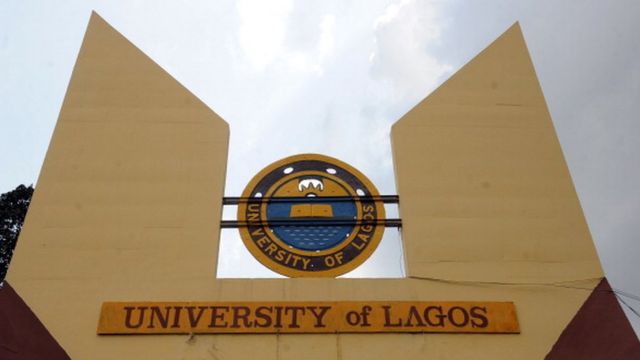The University of Lagos (UNILAG) has officially refuted widespread rumours suggesting that it has increased tuition and other payable fees for its undergraduate students. The institution clarified that what many students perceived as a “fee hike” was, in fact, a restructuring and consolidation of existing dues—not the introduction of new or higher charges.
This clarification came after several returning students expressed concerns online about sudden changes in the amounts displayed on their student portals, with some noticing that previously smaller charges had now significantly increased.
🔹 Background: The Outcry That Sparked Confusion
Earlier this week, multiple students of the University of Lagos took to social media and student platforms to express shock at what they described as a “hidden increment” in their fees.
According to reports, some noticed that certain dues which previously cost around ₦2,000 were now displayed as ₦15,000 or more on the student payment portal.
These portal updates led to widespread speculation that UNILAG had quietly approved a new round of fee increases—barely a year after it had reviewed its fee structure in 2024.
🔹 UNILAG’s Official Statement: “No Fresh Increase, Only Integration”
Responding to the growing controversy, the University’s management, through its Head of Communication Unit, Mrs. Adejoke Alaga-Ibraheem, explained that the perceived increment was due to an administrative decision to centralize and harmonize various dues that were previously collected separately by faculties, departments, and other student bodies.
She emphasized that no fresh increase has been introduced. Instead, all existing and legitimate dues—such as faculty, departmental, and student service payments—have now been merged into the central payment system for accountability and ease of payment.
“What we have done is in the best interest of the students so that when they apply for the Nigeria Education Loan Fund (NELFund), they get funding that covers every bill that they pay in school through a single, unified portal,”
– Mrs. Alaga-Ibraheem stated.
🔹 Why the Consolidation Was Necessary
According to UNILAG, many of the charges that appeared “new” had existed long before, but were usually paid manually or to various faculty accounts.
By integrating them into the central student portal, the university aims to:
- Simplify payment processes – students can now make a single payment that covers all required fees.
- Enhance transparency and accountability – all transactions can be tracked digitally.
- Improve access to educational loans – since the NELFund requires consolidated fee data.
- Eliminate duplication of charges and confusion about where payments go.
🔹 Breakdown of the Updated Fee Structure
Although the total payable amount now appears higher, UNILAG clarified that it only reflects a combination of old and existing dues, which were previously scattered across multiple platforms.
Below is an illustrative example of how the revised structure may appear to students across different faculties and programmes:
| Fee Category | Previous Amount (₦) | New Display on Portal (₦) | Remarks |
|---|---|---|---|
| Faculty/Departmental Dues | 2,000 | Up to 15,000 | Consolidated from multiple smaller dues |
| TISHIP (Health Insurance) | 5,000 | 7,500 | Adjusted for full coverage |
| Entrepreneurship Levy | — | 5,000 | Now added to promote innovation skills |
| Portal Maintenance Fee | — | 15,000 | New integration for ICT management |
| Student Insurance | — | 1,250 | Covers student welfare and accident insurance |
| Student Support Services | — | 1,250 | Welfare and counseling support |
| Professional Services | — | 7,500 | Administrative and professional fees |
| General Studies (GST) | — | 5,000 | For general academic modules |
Note: Amounts vary across faculties and programmes based on course requirements.
🔹 Reactions From the Student Community
Despite UNILAG’s clarification, many students have continued to express mixed feelings about the development.
Some undergraduates insist that regardless of the explanation, the total amount payable has increased, while others have commended the institution’s effort to streamline payments and reduce manual collection of dues.
A 300-level student from the Faculty of Social Sciences described the move as “confusing but potentially helpful,” stating that while the new figures look higher, it could prevent unnecessary double payments in the long run.
🔹 The Broader Context: University Funding and NELFund Integration
The University’s explanation also ties into a broader government initiative — the Nigeria Education Loan Fund (NELFund) — which aims to provide interest-free loans to students across federal institutions.
By consolidating all payments under one platform, UNILAG hopes that students applying for educational loans will find it easier to get approval for full tuition coverage, as all required fees would now be visible and standardized.
This approach, according to education analysts, reflects a growing shift in Nigerian higher institutions towards digital financial integration, ensuring that schools can properly account for every fee collected and reduce internal fragmentation.
🔹 What Students Should Do Next
Students are encouraged to:
- Log in to their portals and review the detailed fee breakdown before making any payment.
- Reach out to their departmental offices for clarification on specific line items.
- Stay informed through official UNILAG communication channels to avoid misinformation spread by unofficial sources.
- Confirm if their updated payment schedule aligns with NELFund’s structure before applying for the loan scheme.
🔹 Expert Insight: Communication Is Key
Education analysts have noted that while UNILAG’s decision may improve transparency, effective communication remains essential to prevent panic among students.
According to policy observers, many Nigerian institutions face backlash not necessarily because of fee changes, but because students are often not adequately informed before such updates appear on portals.
Experts suggest that regular student–management forums and clear circulars should accompany any administrative update to maintain trust and clarity.



